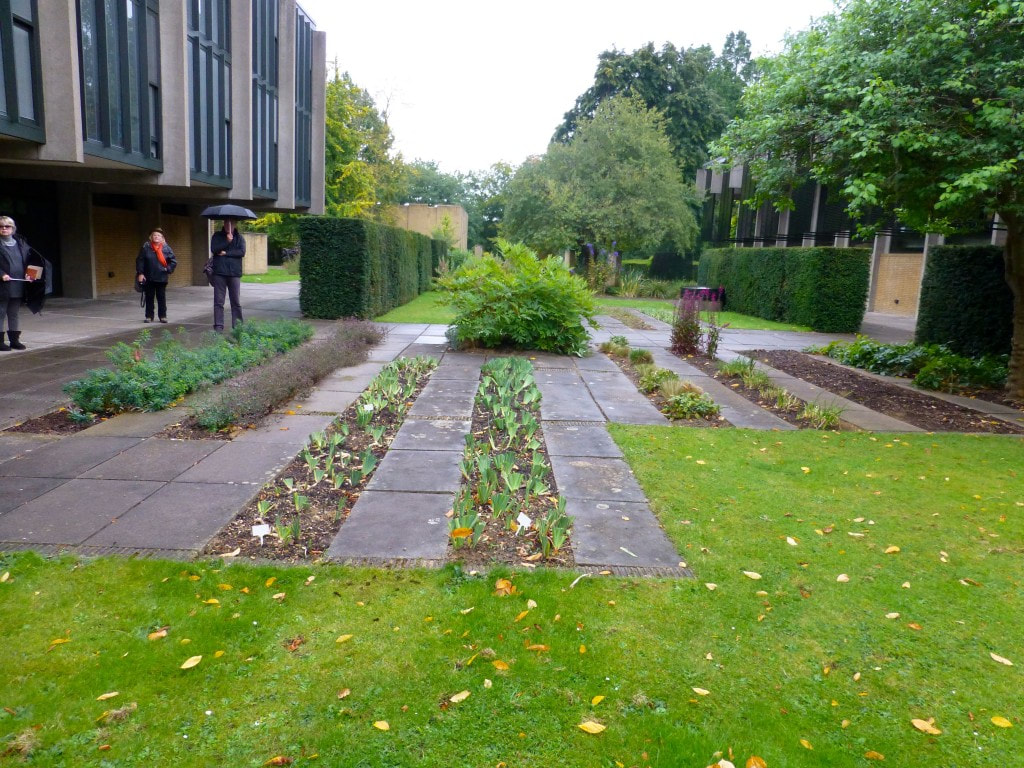Mies van der Rohe replied imperiously that he was astonished that his client expected a house for family living. Like so many contemporary masterpieces Farnsworth House has proved impossible to live in, and needs continuous repair to keep it standing. I’m all in favour of “less is more“, but I think that here Dr Farnsworth had a point.
As if to emphasise the fact that Oxford already had far too much good architecture, the founders of St Catherine’s College appointed a starkly modernist architect, Arne Jacobson, to build their new college. Jacobsen, who was strongly influenced by Mies van der Rohe, insisted on designing not only the building, but the furniture and garden as well. The building looks good, and although the flat roof, like all flat roofs, needs constant work, it seems to function better than Farnsworth House. The building merits its Grade 1 status. According to the garden manager, Simon Harwood, the gardens have been given Grade 1 status as well, which is a bit of a mystery as they are very different from Jacobson’s original design. The fact that they have a garden manager rather than a head gardener speaks volumes. The garden consists principally of lawn, block paving made out of concrete, and hedging and the garden manager’s job is to see that these are looked after. Very little horticulture is required. One of his jobs is to check the concrete slabs, which are one metre long instead of the conventional 90cm, which he does by putting a foot on each end of a slab and seeing if it wobbles. This takes a whole week. There’s a strange part of the garden, pictured here, where there are a series of long rectangular beds, which seem totally out of synch with the rest of the garden. And so they are. It seems that the whole of this area was once covered with concrete slabs and the beds have been created where slabs have been lifted to replace those which have been broken elsewhere in the garden. Somehow, I don’t think Jacobsen would have approved.
0 Comments
Leave a Reply. |
|


 RSS Feed
RSS Feed